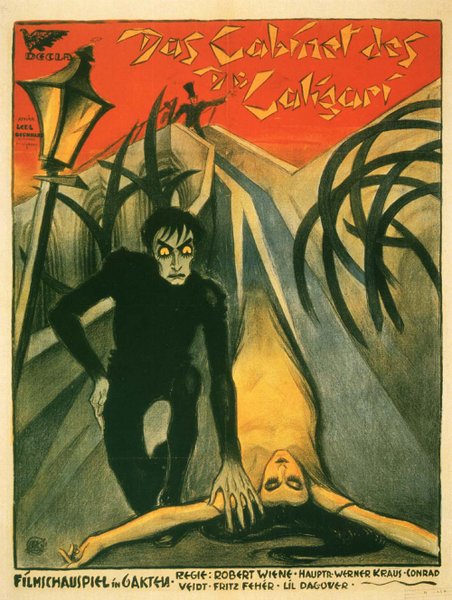Not About the Narrative

BY KATE SAMPSELL-WILLMANN
Der letzte Mann (1924) is two movies in one. Presented on December 1 as part of a series of important German Expressionist films of the 1920s sponsored by the German Academic Exchange Service (DAAD) and directed by Friedrich Wilhelm Murnau, the film was a trendsetter in several ways.
The Last Man (renamed The Last Laugh for English-reading audiences) is widely regarded as the first art film. Silent films are often distinguished by the use of inter-titles, written interjections by the creative team to explain the story or to provide bits of conversation. Inter-titles allow the audience to follow the narrative - the story - of the film. Film, being a non-static medium, quickly adapted to the familiar theater format of a linear storyline, a trope that continues in large budget productions today.
 The Last Man, however, is not about the narrative. The tragically familiar tale is one of superannuation, pride in one's occupation, and ironic tragedy brought by unthinking kindness. The aged porter of the Atlantic hotel in busy Berlin is demoted after being challenged by a heavy trunk (one that had stymied the effort of a younger man). After having the impressive porter's coat literally stripped from his back (and with it the old man's identity), the hotel manager takes pity on the fellow and gives him the job of toilet attendant.
The Last Man, however, is not about the narrative. The tragically familiar tale is one of superannuation, pride in one's occupation, and ironic tragedy brought by unthinking kindness. The aged porter of the Atlantic hotel in busy Berlin is demoted after being challenged by a heavy trunk (one that had stymied the effort of a younger man). After having the impressive porter's coat literally stripped from his back (and with it the old man's identity), the hotel manager takes pity on the fellow and gives him the job of toilet attendant.
In order to maintain his substantial status in his working-class community, the old porter takes his coat and wears it home, maintaining the fiction of his class superiority. Of course, he is found out the next day (again through one act of kindness and another of cruelty) and returns home in disgrace. The "director's cut" ends with the old man collapsed in a chair in the toilet having turned the coat over to a night security guard. Fade to black as the guard covers him up with his own, significantly less impressive, cloak.
The first inter-title occurs at this point, explaining that the film should have ended in that scene but that the "screenwriter" took pity on the protagonist. In an outrageous turn of events, the story continues with the porter returning to the Atlantic as a billionaire, generous with his money to those who work in the hotel, having the last laugh on those who spurned him.
The film introduced three revolutionary, and still prevalent, standards of film: a dynamic camera (previously cameras were anchored and action moved around them), a dream sequence that introduces an abstract alternative narrative, and the necessity to compromise artistic vision for a box-office- boosting happy ending.
Almost imperceptible to the modern viewer, a scene in the revolving door must have wowed the 1924 audience as the cinematographer carried the camera through the spinning door, focused on the porter's face as his world was sent spiraling by the appearance of a new porter taking up the position of power in front of the building. The visual movie metaphor was born.
The dream sequence was at once humorous and tragic. On the evening after his daughter's wedding, the old porter falls into a drunken sleep and dreams of being able to lift the dreaded trunk with one hand and toss it about like a pillow. Whereas critics of the film focus on the militaristic caché of the brass-buttoned coat and the smart salute (from the accuracy of his salute, the actor had obviously once been a soldier) as status markers of interwar German society, the dream reveals that the old man wishes most for the esteem of his coworkers, the agility of his youth, and the beneficence that accompanies social standing. He barely mourns the morally bankrupt kowtowing of his neighbors.
One is disturbed when viewing such an ably constructed film as this when considering the box office necessity for such things as happy endings, voice-overs (ask Ridley Scott about that), and narrative-driven cinema. I admit it; I'm a fan of massive explosions and high body counts as much as the next girl, but I also really enjoy seeing a film that expects the viewer to have an IQ above room temperature. Some filmgoers don't need to be distracted by something shiny. They can ponder layers of meaning while simultaneously enjoying historically and culturally rich background scenes that tell a story without the need to reinforce that a story is being told.
In The Last Man, the roving camera becomes the viewer (even seeing the world through a distorted drunken haze), and with help from the jazz influenced score, frees our brains from the dictatorship of the narrative. What is left is the tragedy of everyday life unraveling in disturbing Expressionist hues rich with meaning.